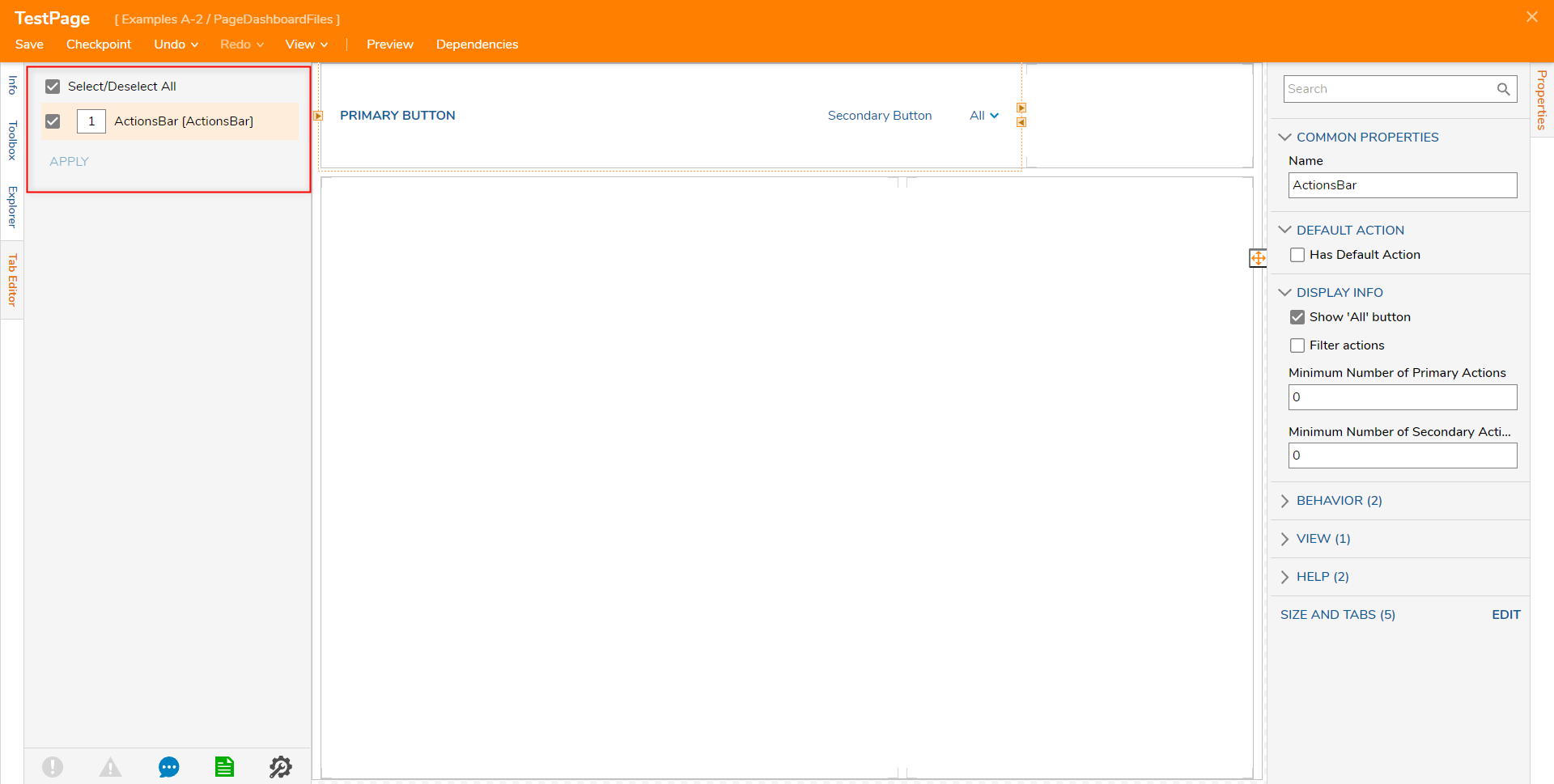Overview
Pages are visual Designer Elements that are used to showcase multiple Decisions Elements and its data for visualization and analysis. Such elements allow users to complete tasks/provide functions such as:
- Embed an external Web Page
- Provide information on Process tracking
- Display Reports and user-created Forms
- Act as a user Dashboard
Dashboards refer to Pages that are comprised of multiple Designer Elements/Page Components. They are typically used as the face of End-User maintenance or as operation for an application due to their ability to display/utilize Reports, Tiles, Action Buttons, and more simultaneously. Given their dynamic nature and direct communication with process data, internal Dashboards may easily replace those created in Excel in any business process.
The following document introduces introductory concepts and functions of Pages and Dashboards in Decisions.
Add Page/Dashboard and Page View
Once a Page/Dashboard has been created, it can be attached to a Folder so that when the Folder is selected by the End-User, the Page/Dashboard will appear instead of the typical FOLDER VIEW.
This View is referred to as the Page View.
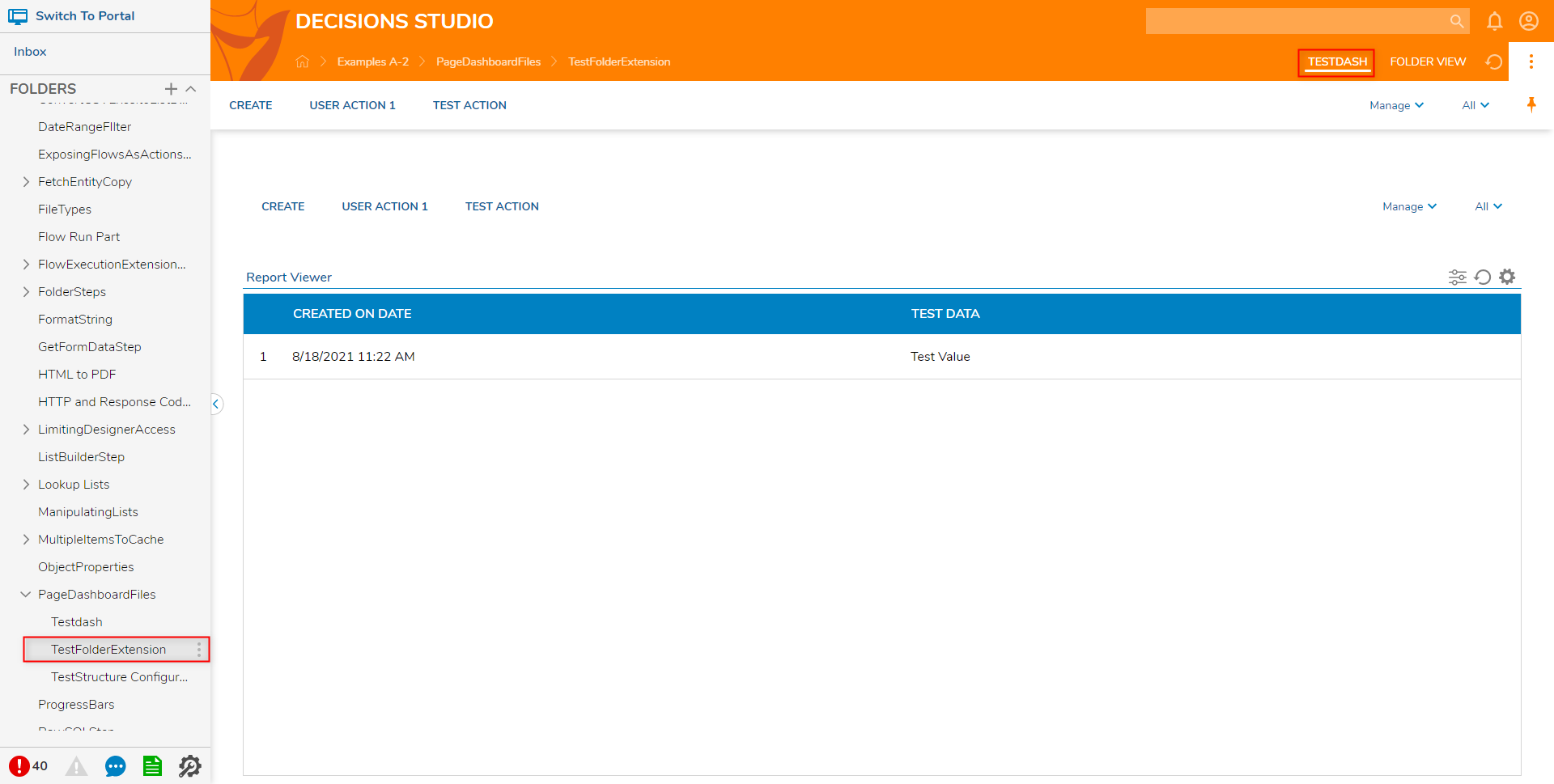
Add Page Report
One of the primary functions of Pages/Dashboards is to act as a vessel for a Report. To expedite the Page creation process, users may utilize the Add Page Report feature. This Action creates a Page that changes the default Folder View to a Page that consists of a single Report Viewer on the user-specified Folder.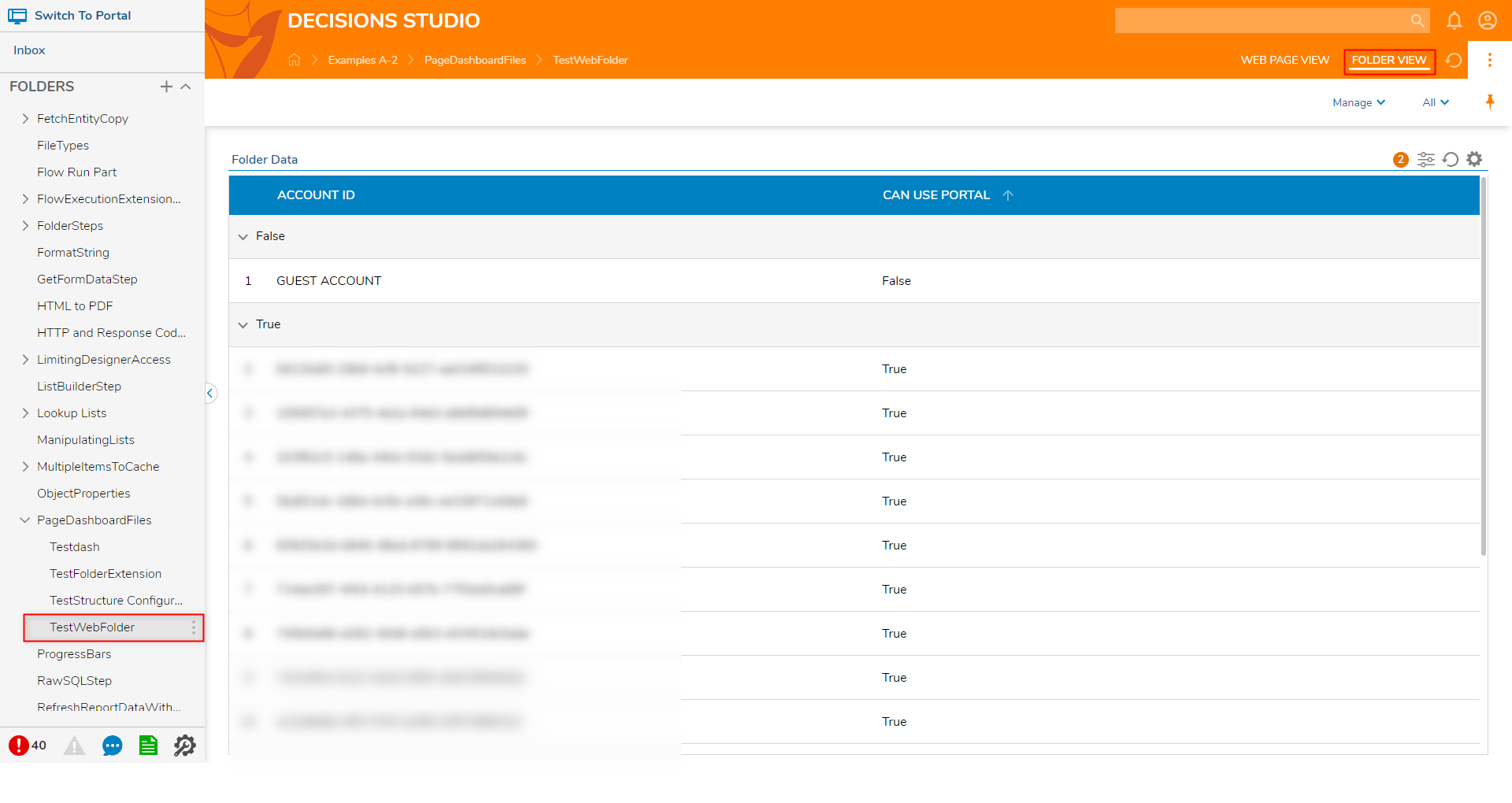
Add Embedded Web Page
By utilizing the Add Embedded Web Page Action on a Page/Dashboard in Decisions, users are able to embed a desired web page in their Decisions environment. This allows users to bring an additional element of personalization or provide access to resources such as external knowledge bases, or a company's website. 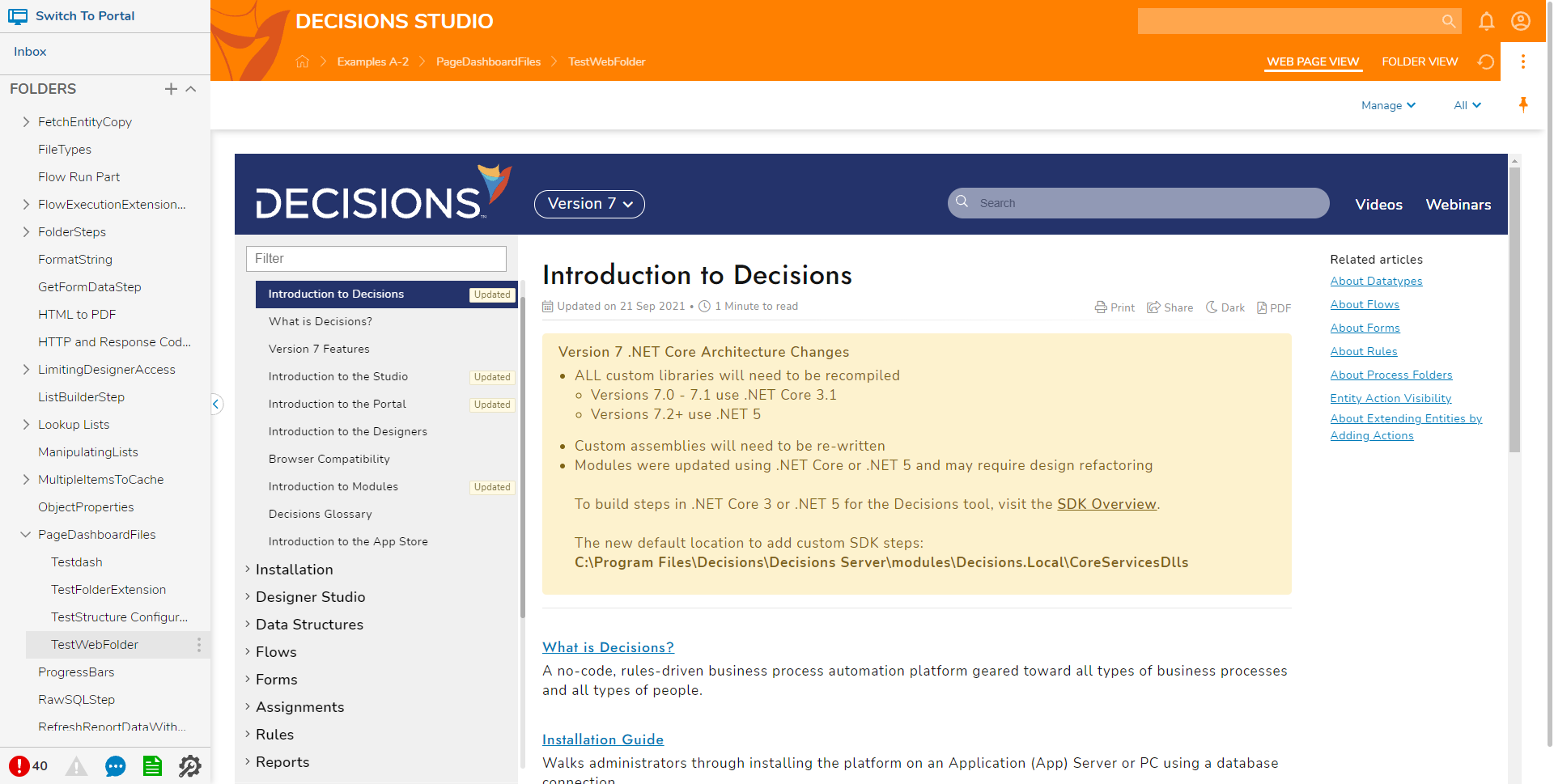
Page Components and Configuration
Page Components are the individual pieces that compose a Page/Dashboard. They are added to the workspace by drag and dropping them from the Toolbox tab on the left-hand side.
Similar to other Designer Elements, after being added to a Page, components may be configured via the Properties tab to the right. By adjusting their Properties, users may control features of the Page Components such as the component's appearance, Behavior, and position.
Typically, Page Components are used to display data that is relevant to a Report that the Page references. To ensure that the most accurate data is captured at run-time, the Page Designer does not refresh during at Design time. Selecting the Preview button from the top Action Bar of the Designer opens a preview of the completed Dashboard at run-time.
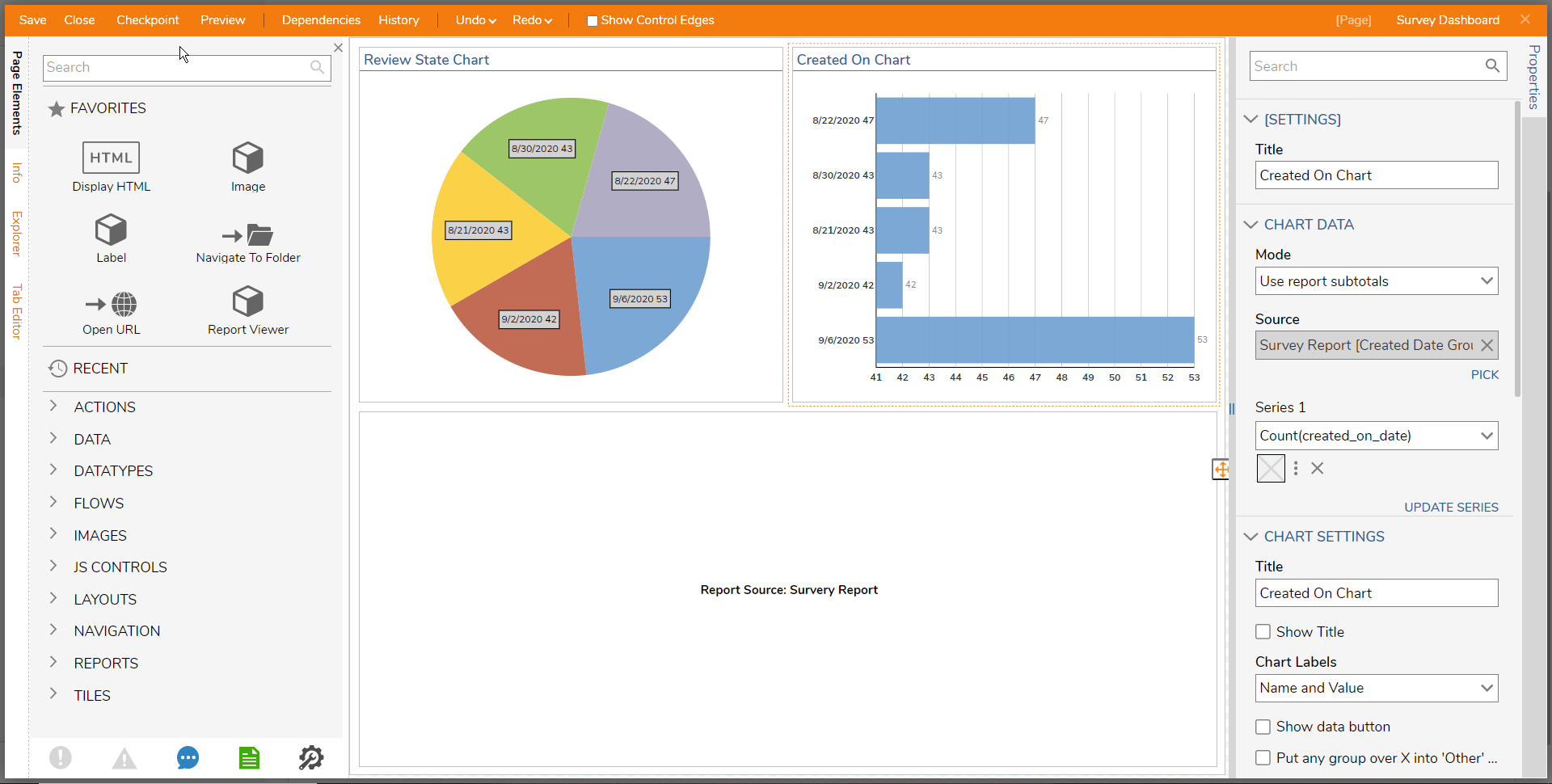
Tiles
Tiles are Page Components that can display dynamic content such as infographics, Forms, or Charts. Tiles can be found by via the TILES category in the Toolbox tab.
The primary data source of Tiles on a Page/Dashboard is Reports, which can be grouped or specifically created to populate components with data. The screenshot below shows the Page Designer with the default 2x2 template layout in Decisions version 7.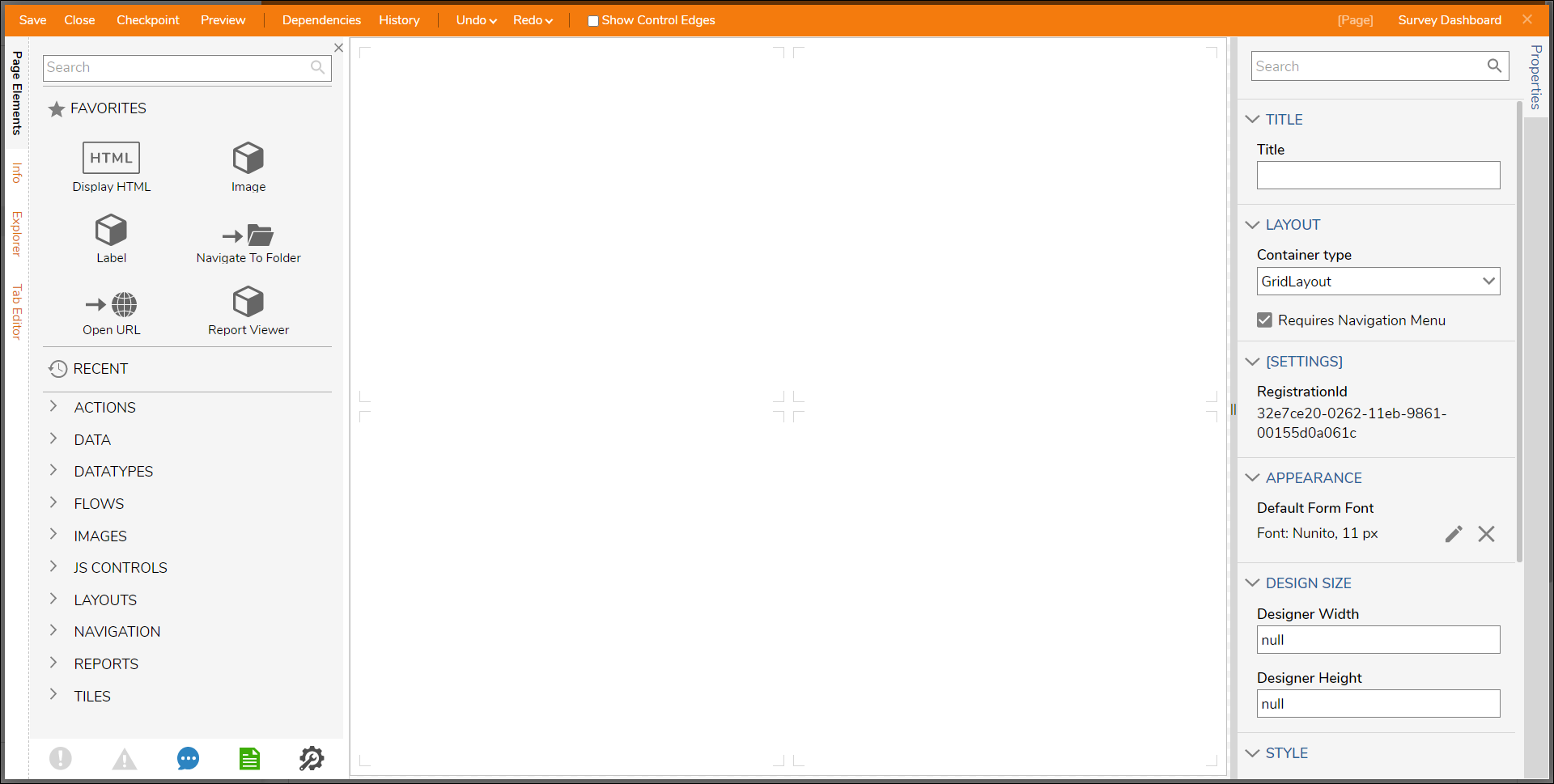
Explorer
This tab shows all the Page Components that are being used on the Page/Dashboard in its present state, as well as any Page Components inside of Containers.
Selecting one of the items in the list of elements highlights it and provides a quick Action Menu for the component in the editor workspace on the left side.
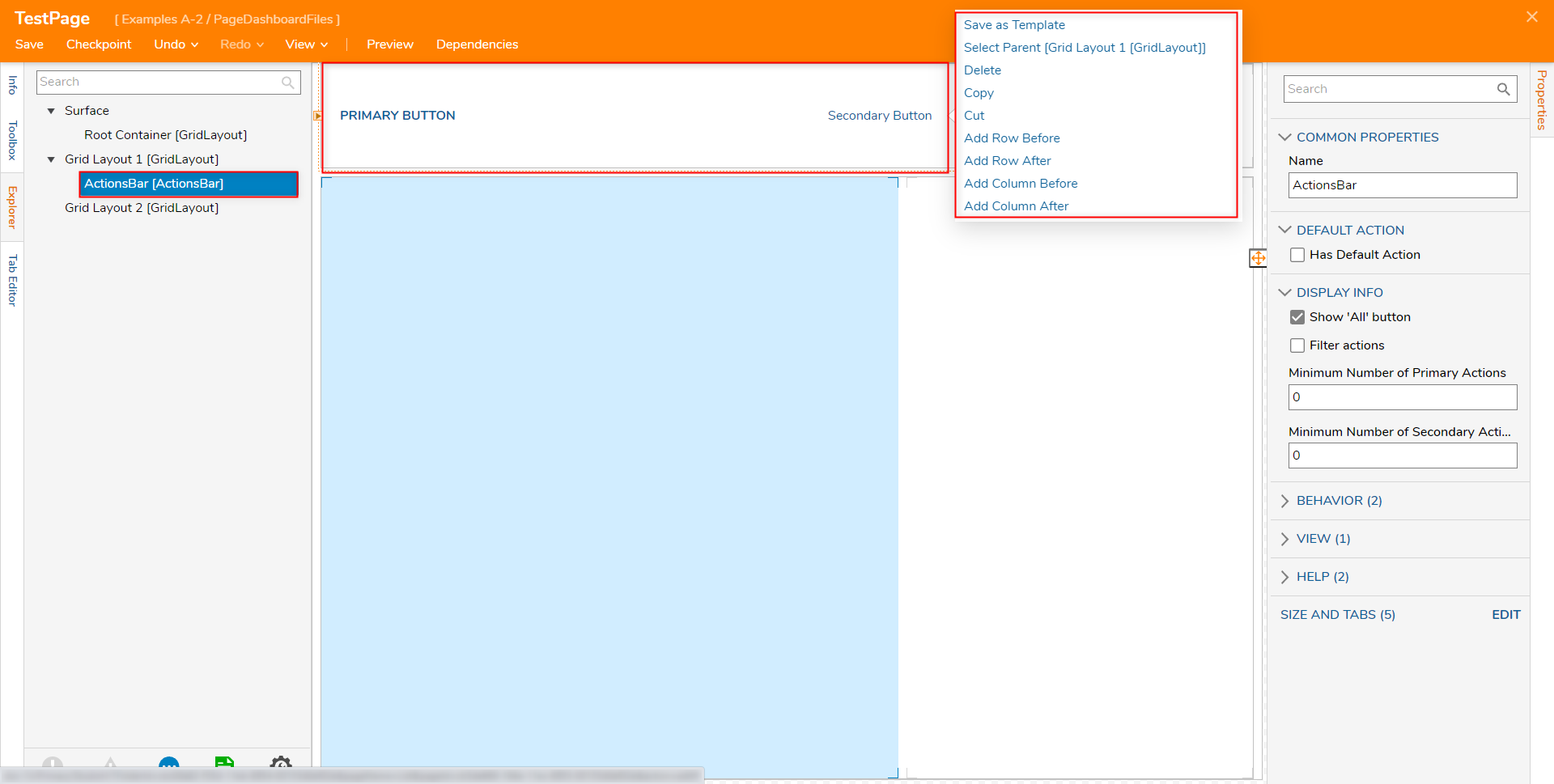
Tab Editor
This tab allows the Designer to sort and organize what order the Page Components will be hit when the end-user uses the ‘tab’ keyboard function.
